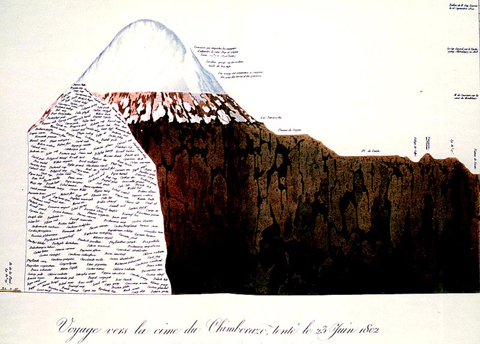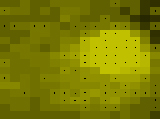|
Humboldt and H|U|M|B|O|T's New Nature of Narrative for a New Narrative of Nature Humboldt invented a new nature of narrative for a narrative of nature two centuries ago, freeing scientific scholars and writers from hiding behind an 'Enlightened' objectivity, freeing natural scientists to enter their own pictures and models of a natural world, to see themselves as part of their observations. H|U|M|B|O|T takes a quantum d-video and ascii leap in this regard. Aided by hypertext, database, neural net and data visualization computation, as well as affordable digital content production and delivery technology, H|U|M|B|O|T's audience enters the picture as well, and traces of what they find and when, become the cyberscore for editing what future audience members will be watching, when and if they choose to set H|U|M|B|O|T in its new autopilot cybercinema mode. This collaborative mise en scène is unprecedented in expanded digital cinema. In short, Humboldt and his H|U|M|B|O|T readers supply the cyberscript. H|U|M|B|O|T authors add hypermovies, and the resulting well or web of travel-as-art-as-information, a deep cyberatlas if you like, is presented to audiences for navigation. As such, along with Humboldt and H|U|M|B|O|T authors, the audience becomes a co-traveller, their itinerary tracing possible travels, hypermovies, for future author-audiences. |
Database
Dilemma
"Towards the end of our journey this last collection
formed |forty-two boxes containing a herbal of 6,000 equinoctial seeds,
shells and insects ... Source: A.v. Humboldt, "Personal Narrative of a Journey to the Equinoctial Regions of the New Continent 1799 - 1804".
Kohonen Mapping of Humboldt's book "Personal Narrative..." taken passage by passage and marked-up subjectively by h|u|m|b|o|t readers according to 4 parameters - emotion and modifier, keyword and commentary, location and position, and time. The number of squares are the result of the number of primary concepts contained in Humboldt's entire book, cover to cover. The color of each square indicates, in ascending order - opaque to bright yellow - the number of passages associated within a single concept. The arrangement of the squares indicates 'neighborhoods' of concepts - those in proximity share similar content and those distant, disparate content. The Kohonen Self-Organizing Mapping carried out on Humboldt's text looks for crucial markings 'read into' his text by h|u|m|b|o|t readers. The 4 markers indicating, passage by passage, a subjective view of Humboldt's emotion and a modifier, keywords and commentaries, position (GPS) and location, as well as a chronicles standard parameter of time, in this case interpreted through the prose, i.e. "We set off at dawn...", "Minutes later", or "After lunch..." to an exactness approaching hours, minutes and seconds.
|

